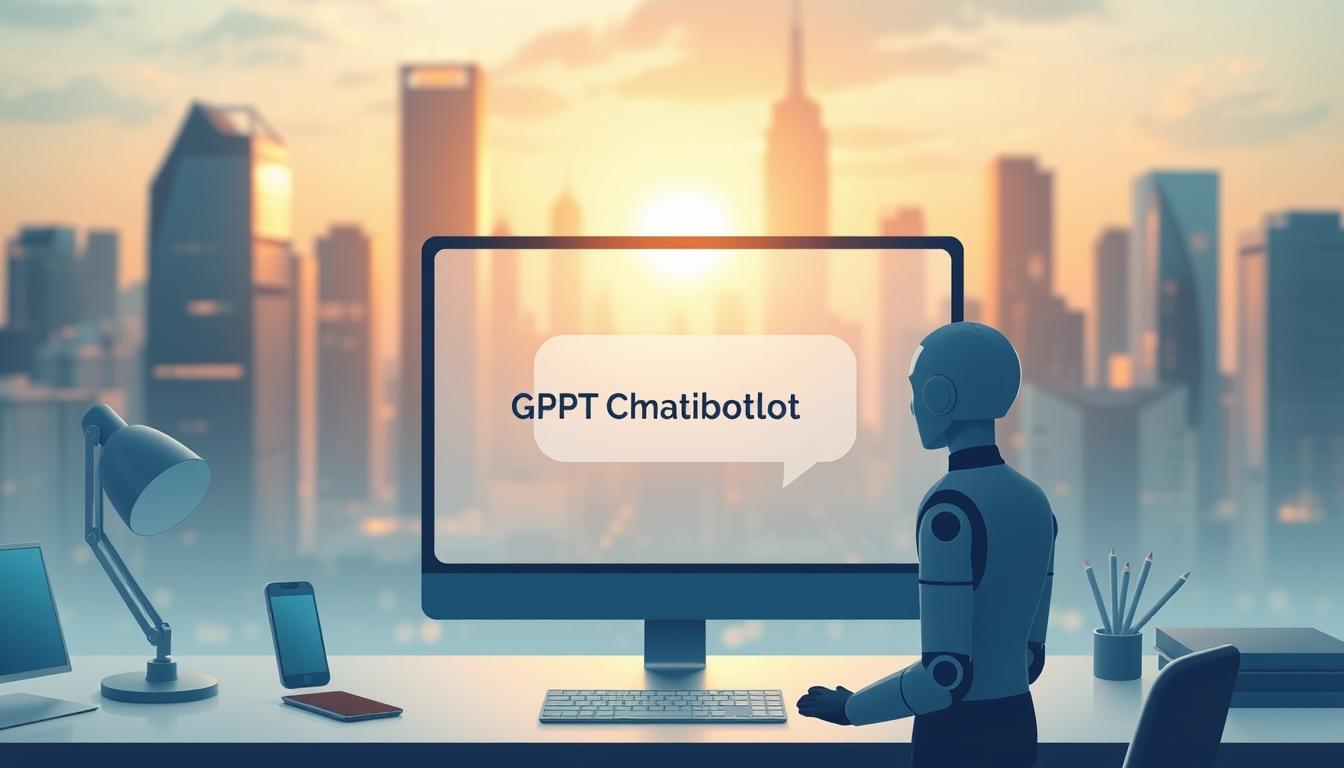Over 300,000 educators worldwide now use AI tools to change classrooms. A survey of 500 teachers showed 60% use AI for learning platforms, grading, and games. This change shows how AI is changing teaching, but there are also challenges.
More than 65% of teachers worry about plagiarism and data privacy with these systems.
Takeaways
- 60% of teachers use AI for grading, lesson planning, and tutoring.
- AI tools generate personalized content and instant feedback, boosting student engagement.
- Plagiarism concerns rise as AI essay generators may mislead academic integrity checks.
- Data privacy remains critical as 65% of educators highlight security risks.
- Successful ai in education balances innovation with ethical safeguards and teacher training.
The Evolution of AI in Education
Education technology has changed a lot. It started with simple tools and now uses advanced AI systems. The 1950s saw the first steps towards today’s smart learning tools. This section shows how these changes have shaped artificial intelligence in education today.
Early Innovations in Educational Technology
In 1956, the Dartmouth Conference started to define AI. By the 1980s, computer-assisted instruction began using basic algorithms for feedback. These early systems grew into the 1990s intelligent tutoring systems (ITS), which changed content based on how students did.
Progress Through Artificial Intelligence in Education
Now, AI opens up new ways to learn. Sites like BYJU’S and Duolingo track how students do with machine learning for students. Today, we have:
- Dynamic textbooks that adjust to each student’s needs
- AI tutors that give help right away
- Tools for students with disabilities
Studies show a big change: from 5% in 1994 to 71% in 2014, AI in education research grew a lot. Projects focusing on teamwork went from 0% to 29%. This shows AI’s role in teaching 21st-century skills like thinking critically. With over 50 million users in India alone on BYJU’S, AI makes learning fair for all.
Transforming Traditional Classrooms
Traditional classrooms are changing into dynamic spaces thanks to educational technology trends. Schools now use AI tools like adaptive learning platforms and VR simulations to make lessons interactive. For example, Arizona State University uses AI to personalize math instruction. DreamBox Learning boosts problem-solving skills through gamified exercises.
Teachers say it’s working: 60% report better student outcomes after using AI. Tools like chatbots offer instant help, and VR lets students explore historical sites or scientific concepts hands-on. These changes help address learning gaps by analyzing real-time data, ensuring no student is left behind. Even special needs education benefits—AI-driven apps now aid communication for autistic learners through visual aids and structured feedback.
- Adaptive learning systems tailor content to individual progress
- VR/AR creates immersive experiences for complex topics
- AI chatbots provide instant academic support 24/7
- Data analytics track performance to adjust teaching strategies
These educational technology trends also focus on equity. Multilingual AI tools bridge language barriers, and global collaboration platforms connect students worldwide. Yet, success depends on teacher training—universities like SMU now offer AI integration courses for educators. As classrooms become tech-driven hubs, the focus remains on balancing innovation with ethical use and human guidance.
Innovative AI Learning Tools
New ai learning tools are changing how we learn and teach. They fit well into smart classrooms, meeting different learning needs. AI tools, from speech apps to interactive platforms, make learning easier and better.
Emerging Technologies in Learning Tools
Apps like AudioPen and Canva Magic Write help teachers create content easily. Curipod creates interactive lessons with polls and SEL checks, keeping students engaged. Eduaide.Ai offers many resources, making planning easier. These tools help teachers teach more, not less.
Integrating Machine Learning for Students
Machine learning makes tools like Quizizz and Google Expeditions adapt to students. Smart Sparrow changes content based on student answers, making learning personal. Gradescope grades work automatically, giving quick feedback. Even creative tasks get a boost: Slidesgo designs presentations with AI.
AI also helps students with special needs. Notta’s speech-to-text helps those with dyslexia or hearing loss. EarthSpeakrmixes emotional learning with global topics, expanding cultural knowledge. These tools make learning inclusive for all.
Personalized Learning with AI
AI helps teachers make learning fit each student’s needs. Adaptive learning platforms look at how well students do to change what they learn. Intelligent tutoring systems find where students need help and give them the right tools.
Adaptive Learning Systems
Adaptive systems use AI to make learning paths that change. For example, Duolingo changes its lessons based on how well you do. In class, AI adjusts math problems to match what you can handle.
Li and Wong (2023) say these tools save teachers a lot of time. They make learning plans for each student without needing to do it all themselves.
- Real-time progress tracking identifies learning challenges instantly.
- Sentiment analysis tools monitor engagement through facial expressions via webcam.
- AI-generated practice materials align with individual learning speeds.
Case Studies in Customized Education
In the UK, a pilot program uses AI to adjust lessons based on what students know. Texas schools use AI for basic math, so teachers can work on group projects. Over 70% of U.S. schools used AI for homework during the pandemic, reports from 2022 show.
These systems also let students learn on their own. For example, Smart Sparrow’s modules let you learn at your own speed. But, we need to study how these systems work over time. We also need to make sure they are fair and keep students’ data safe.
Machine Learning for Students: Revolutionizing Study Methods
Machine learning is changing how students learn. It combines technology and education to make studying smarter. Tools like Microsoft Copilot for Education look at how students do to make lessons better. They help teachers find where students need help and change how they teach.
These tools also do tasks like grading, saving teachers up to 5 hours a week. This time is now used to help students more.
- AI-driven platforms like DreamBox and Smart Sparrow adjust content difficulty in real time, ensuring students work at their optimal learning pace.
- Westfield High School reported a 18% rise in test scores after adopting AI tools, showing measurable progress in personalized learning.
- Virtual assistants powered by AI offer instant feedback on assignments, reducing delays and improving skill retention.
Schiller International University uses AI to make complex subjects easy to understand. This digital transformation in education also helps students work together better. AI sorts teams based on what each member is good at, helping everyone learn from each other.
Features like real-time translation and tools for students with disabilities make learning fair for everyone. This way, everyone can participate and learn together.
Adaptive systems help teachers focus on teaching critical thinking. Schools like these show AI is more than just a tool. It’s a way to make education fair and ready for the future. McKinsey says these changes could add $13 trillion globally by 2030, showing how big the impact can be.
Smart Classrooms: Bridging Technology and Teaching
Smart classrooms combine the latest technology with teaching methods to make learning exciting. Cognitive computing in schools powers these systems. It uses data in real-time to make lessons better and outcomes higher. These spaces use sensors and AI to adapt to each student’s needs.

Implementing Smart Technologies
Key parts include:
- Interactive displays and sensors that track temperature, noise, and light
- Biometric tools that check focus and stress through facial expressions or posture
- AI systems that automate grading and attendance, cutting teacher work by 70% (McKinsey)
The Bill & Melinda Gates Foundation found AI classrooms increase engagement by 20%. But, 25% of rural schools lack fast internet (NCES), 2023), making access hard.
Enhancing Interaction in Modern Classrooms
Analytics adjust lessons on the fly. For example, if sensors see students zoning out in algebra, AI suggests videos or practice. Thermal and acoustic sensors keep the classroom comfortable, and biometric tools help reduce stress. Teachers use this info to create activities that fit each student’s needs, blending tech and human touch.
Cognitive computing in schools also makes teaching easier. It lets teachers focus on mentoring. Success stories show these systems cut down on routine tasks. This lets teachers spend more time on creative lesson planning and helping students.
Digital Transformation in Education
Digital transformation in education needs careful planning. It’s about mixing technology with teaching in a way that doesn’t mess up the main goals of learning. Schools must find a balance between new ideas and practical steps to make sure the change sticks.
Strategies for Effective Integration
Starting with adaptive learning systems is key. These systems adjust content to fit what each student needs. Schools using AI tools like Google Classroom or Microsoft Teams make teamwork and sharing resources easier.
- Use AI analytics to track learning patterns and adjust curriculum delivery.
- Implement VR platforms for immersive history or science lessons, like virtual field trips.
- Adopt cloud-based LMS to centralize resources and enable 24/7 access.
Overcoming Digital Challenges
Big hurdles include worries about data privacy and old tech. A school in Texas cut grading time by 40% with AI tools. They also made sure data was safe with encryption.
- Train teachers via workshops to build confidence in using AI tools like Khan Academy’s AI tutors.
- Partner with IT experts to upgrade networks and hardware for reliable tech access.
- Engage parents through transparency about data usage and privacy safeguards.
Educational Technology Trends Shaping the Future
Educators around the world are using AI tools to change how we learn. Today, 60% of teachers use AI every day to make learning fit each student’s needs. Tools like Squirrel AI and Reading Coach by Microsoft are leading this effort.
- AI tools like ChatGPT and Synthesia help create lessons and quizzes.
- Real-time data analytics let teachers see how students are doing and change lessons fast.
- Virtual and augmented reality (VR/AR) with AI create new ways to learn.
But, there are also challenges. Only 51.5% of AI content is reliable, which is a worry. Yet, 74.5% of checked sources show AI can make learning more engaging. For example, 37.6% of Gen-Z students use AI for homework, and 46.6% of Gen-X teachers use it for research.
For teachers, embracing these trends means:
- Getting training in AI to understand its use better.
- Choosing AI tools that are open about their data practices.
- Working together with AI tools to create a balanced learning experience.
As AI grows, schools must find a balance between new tech and critical thinking. This way, tools like LearntAI can help, not replace, human teaching. The future classroom will be a mix of creativity and technology, helping both teachers and students.
Cognitive Computing in Schools: Enhancing Decision Making
Cognitive computing is changing how schools handle information and make choices. It analyzes huge amounts of data to find trends. This helps schools make better decisions for students and staff.
Tools like IBM’s Watson Teacher Advisor and Pearson’s AIEd show how this tech improves education. They support real-world changes in teaching and learning.

Applications of Cognitive Computing
- Analyzes student performance data to identify learning gaps and tailor interventions
- Watson Teacher Advisor offers personalized lesson plans based on classroom needs
- Pearson’s AIEd uses neuroscientific insights to design adaptive learning pathways
- VR simulations let students practice decision-making in risk-free virtual scenarios
Benefits and Future Prospects
These systems empower schools to:
- Make data-driven decisions faster than traditional methods
- Reduce administrative workload through automated analysis
- Identify at-risk students earlier using predictive analytics
Future plans include combining real-time analytics with emotional learning data. This will create a complete picture of each student. By 2030, over 70% of schools might use these tools, according to EdTech forecasts.
Working together, AI and educators will be essential. They will make sure technology helps, not hinders, human teaching skills.
Conclusion
AI in education is changing how we learn. Tools like IBM Watson and Carnegie Learning’s Mika offer personalized learning paths. They use VR/AR and cognitive computing to make learning more accessible and efficient, saving money too.
Platforms like Coursera and Duolingo use AI to reach more students worldwide. They adjust their content to meet different needs. This makes learning more flexible and effective.
Data privacy is a big concern with AI handling student info. It’s important to find a balance between innovation and security. We need to make sure AI is used ethically and doesn’t replace human interaction.
Human touch is key to developing social skills and preventing cheating. We need clear rules for AI’s use in schools. This helps keep the bond between teachers and students strong.
Schools and tech developers must work together to use AI wisely. We should focus on fairness and openness. This way, AI can help teachers without taking over their jobs.
By using AI thoughtfully, we can create better learning spaces. Here, technology and human guidance work together. This approach can really improve education for everyone.
FAQ
How is AI changing education?
AI is making learning more personal. It offers smart tutoring and learning platforms that meet each student’s needs. This technology boosts engagement and results, helping teachers too.
What are some early innovations in educational technology?
It started with computer help in learning. Now, we have AI for learning that adapts to each student. This has made education more tailored.
What role does AI play in transforming traditional classrooms?
AI turns old teaching ways into new, interactive ones. It brings technology that makes learning fun and engaging for students.
What are innovative AI learning tools currently available?
New AI tools offer adaptive and interactive learning. They help teachers and students by making learning better and more effective.
How does AI enable personalized learning experiences?
AI uses adaptive systems to understand what each student knows. This lets education be tailored to each one, leading to better results.
How is machine learning impacting student study methods?
Machine learning makes grading easier and gives students tips. It helps them focus on solving problems, changing how they study.
What are smart classrooms and their benefits?
Smart classrooms use new tech for better learning. They help teachers and students work together more effectively, blending tech and teaching.
What does digital transformation mean for education?
Digital transformation adds digital tools to learning. It tackles issues like keeping data safe and getting everyone to use technology. Success in these areas leads to modern learning.
What educational technology trends are shaping the future?
New tech and trends are changing education. They offer insights and tools for the future, helping educators and leaders face new challenges and chances.
How is cognitive computing applied in schools?
Cognitive computing looks at data to help make decisions in schools. It benefits both teachers and administrators, and could change education even more in the future.





